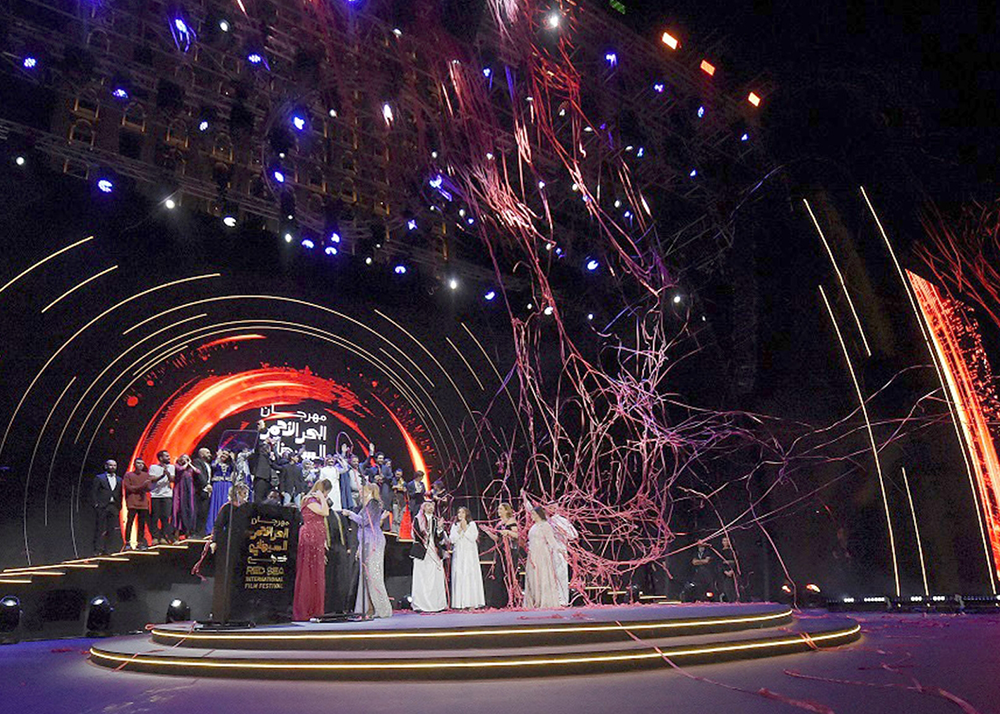Youth in the Kingdom who are now exposed to a barrage of global influences for the first time – are surfing a cultural wave unlike any in history, blending heritage with hyper-global influences. This is reshaping their identities rapidly within a generation, and turning both the physical and digital worlds into stages for self-expression.
By the time you finish reading this article, somewhere in Saudi Arabia a teenager will have jumped on a new TikTok trend, shared an Instagram story from a live concert, or updated their gaming avatar to reflect the latest skin drop.
None of these things seem remarkable on their own. But taken together, they’re signs of a generation navigating a cultural shift so fast and so vast, it’s hard to measure, let alone predict where it will land next.
VICE Media’s latest neo-cultural audit of Saudi youth calls it exactly what it feels like: a cultural tsunami. And at the heart of it is a delicate dance between tradition and modernity, heritage and global influence, identity and self-expression.
Riding the cultural tsunami
Saudi youth are today living in “one-of-a-kind friction.” On one side, there’s a deep-rooted respect for inherited religious values. On the other, a boundless curiosity for global culture.
Recent surveys paint a fascinating paradox: over 70 per cent of young Saudis say they want to preserve their religion and traditional culture above all else. Yet 80 per cent also say gender equality, personal freedoms, and human rights must be respected in their society. It’s not a rejection of one for the other but an ongoing negotiation between both.
And that negotiation is happening on every screen, stage, and street. Saudis are among the most digitally connected people on the planet, with 95 per cent of those aged 15 to 34 using social media daily and spending over three hours a day scrolling. Their feeds are a swirl of K-dramas, pan-Arabic series, Hollywood blockbusters, YouTube creators, and every genre of music you can think of.
Cinemas – non-existent a decade ago – are now buzzing hubs. Film festivals like Jeddah’s Red Sea International Film Festival are drawing global attention, and music festivals such as MDLBEAST Soundstorm have brought the likes of Bruno Mars, BTS, and David Guetta to Riyadh. Add in the explosion of sports events, fashion weeks, gaming tournaments, and art exhibitions – the pace of cultural exposure is staggering.
Keeping up with this massive wave of novelties can be exhilarating. But the danger is that in sampling everything, you’re not engaging deeply with anything, leaving young Saudis at risk of cultural shallowness, or even identity fragmentation.
Identity as a constant project
Some see identity less as a fixed inheritance and more as an ongoing construction project, one that plays out online as much as off.
What you buy, wear, or post becomes a carefully coded message, involving self-presentation and symbolism. A Marimekko phone case or a K-beauty skincare haul is less about the product and more about the global references it signals.
The cycle is fast and ruthless. Micro-trends flare up and fade in weeks, and identities often follow the same rhythm … experimented with, posted, then archived. It’s an endless loop of reinvention, performed under the unspoken pressure to stay visible but within cultural lines.
From the outside, or on social media, you see only the polish: perfectly staged unboxings, flat lays, and filtered morning routines. What you don’t see are the hours of editing, the discarded takes, and the constant calibration to balance relevance, coherence, and safety.
Avatars, alter egos, and escapes
If the physical world has limits, the digital one offers alternate selves. And in Saudi Arabia, gaming has become a major arena for this kind of expression.
According to PwC, 24 million Saudis – a massive 67 per cent of the population – are gamers. Avatars aren’t just characters but canvases of self-expression. They can be dressed, designed, and lived through in ways that real life might not allow. Snapchat offers another kind of digital playground, where filters and ephemeral content allow for a more playful, unfiltered self.
But this raises questions: if digital identity becomes the truest version of self-expression, what exactly are young Saudis escaping from … and why? Is the virtual self a liberation, or a quiet reminder of the boundaries still shaping everyday life?
The marketing takeaway
For brands, media, and marketers, these insights are more than social commentary – they’re a playbook for relevance. The Saudi youth audience is hungry for novelty but protective of authenticity. They are fluent in global culture but sensitive to local nuance. They can be captivated in a split second but will move on just as quickly if you fail to hold their attention.
It’s a market where campaigns need to live across both IRL and URL, where identity is a moving target, and where the most meaningful connections will come from brands that understand the emotional work behind self-expression.
Saudi youth aren’t just consuming culture but remixing it, reinterpreting it, and, in their own way, rewriting it. And as this cultural frontier expands, they’ll be the ones deciding which traditions to carry forward, and which new influences to make their own.
Compiled by the VICE Media team.

